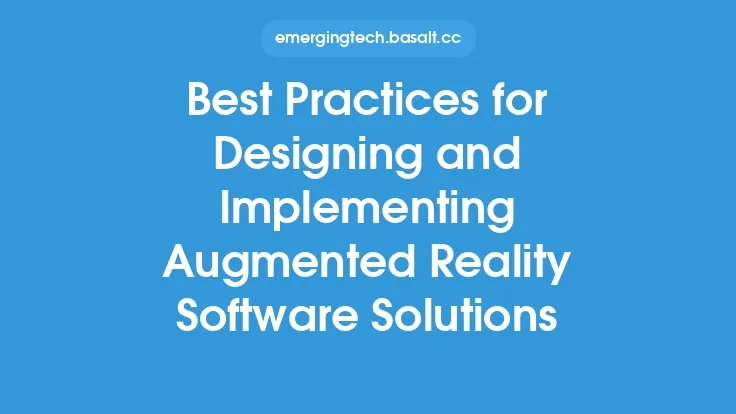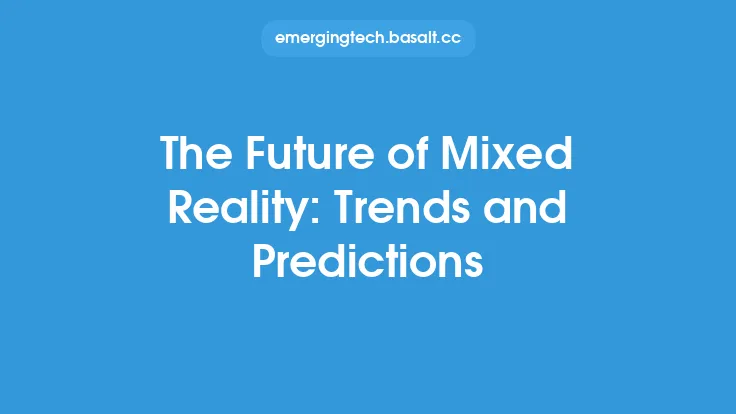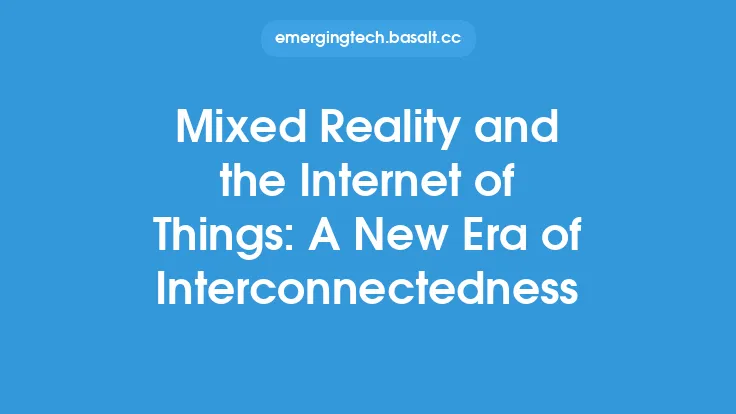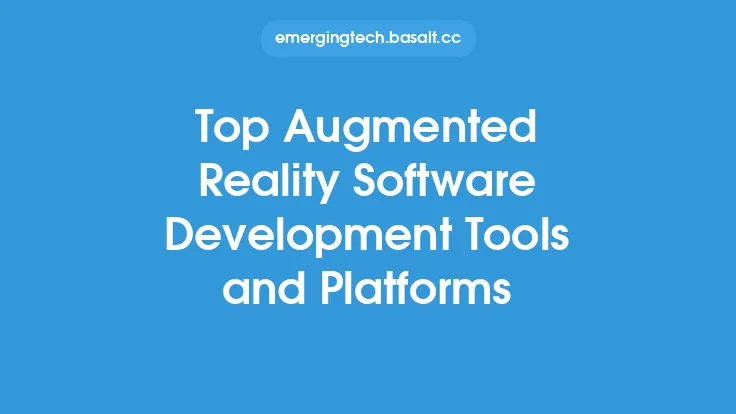Mixed reality (MR) development is a complex and multidisciplinary field that combines elements of virtual reality (VR) and augmented reality (AR) to create immersive and interactive experiences. As MR technology continues to evolve, developers need to stay up-to-date with the latest tools, technologies, and best practices to create high-quality MR applications. In this article, we will delve into the world of MR development, exploring the tools, technologies, and best practices that are essential for creating successful MR experiences.
Introduction to Mixed Reality Development
Mixed reality development involves creating applications that blend digital and physical worlds, using a combination of VR and AR technologies. MR developers use a range of tools and technologies, including software development kits (SDKs), game engines, and programming languages, to create immersive and interactive experiences. MR development requires a deep understanding of computer vision, machine learning, and human-computer interaction, as well as expertise in areas such as 3D modeling, animation, and graphics rendering.
Tools and Technologies for Mixed Reality Development
There are several tools and technologies that are essential for MR development, including:
- Software Development Kits (SDKs): SDKs provide a set of tools and libraries that allow developers to create MR applications. Popular SDKs for MR development include Microsoft's Mixed Reality Toolkit, Google's ARCore, and Apple's ARKit.
- Game Engines: Game engines, such as Unity and Unreal Engine, provide a platform for creating MR applications. These engines offer a range of features, including 3D modeling, animation, and physics simulation, that are essential for creating immersive MR experiences.
- Programming Languages: Programming languages, such as C#, Java, and Python, are used to create MR applications. Developers use these languages to write code that interacts with the MR environment and responds to user input.
- Computer Vision: Computer vision is a critical component of MR development, as it allows developers to track the user's movements and interactions with the physical environment. Popular computer vision libraries include OpenCV and TensorFlow.
- Machine Learning: Machine learning is used in MR development to enable applications to learn from user behavior and adapt to changing environments. Popular machine learning libraries include TensorFlow and PyTorch.
Best Practices for Mixed Reality Development
To create successful MR applications, developers need to follow best practices that ensure a high-quality user experience. Some of the key best practices for MR development include:
- User-Centered Design: MR applications should be designed with the user in mind, taking into account factors such as usability, accessibility, and user experience.
- Performance Optimization: MR applications require high-performance rendering and processing to ensure a smooth and responsive user experience. Developers should optimize their applications for performance, using techniques such as occlusion culling and level of detail.
- Testing and Debugging: MR applications should be thoroughly tested and debugged to ensure that they work correctly and provide a high-quality user experience. Developers should use tools such as debuggers and profilers to identify and fix issues.
- Collaboration and Communication: MR development is a multidisciplinary field that requires collaboration and communication between developers, designers, and other stakeholders. Developers should work closely with their team members to ensure that their applications meet the required standards and specifications.
Technical Considerations for Mixed Reality Development
MR development involves a range of technical considerations, including:
- Rendering and Graphics: MR applications require high-quality rendering and graphics to create a realistic and immersive user experience. Developers should use techniques such as physically-based rendering and global illumination to create realistic lighting and materials.
- Tracking and Localization: MR applications require accurate tracking and localization to enable users to interact with the physical environment. Developers should use techniques such as marker-based tracking and SLAM (Simultaneous Localization and Mapping) to track the user's movements and position.
- Audio and Sound Design: MR applications require high-quality audio and sound design to create a realistic and immersive user experience. Developers should use techniques such as 3D audio and sound propagation to create realistic sound effects and music.
- User Input and Interaction: MR applications require intuitive and responsive user input and interaction to enable users to interact with the virtual environment. Developers should use techniques such as gesture recognition and voice commands to enable users to interact with the application.
Conclusion
Mixed reality development is a complex and multidisciplinary field that requires a deep understanding of computer vision, machine learning, and human-computer interaction. By using the right tools and technologies, following best practices, and considering technical factors such as rendering, tracking, and audio, developers can create high-quality MR applications that provide a realistic and immersive user experience. As MR technology continues to evolve, developers need to stay up-to-date with the latest trends and advancements to create innovative and engaging MR experiences.





